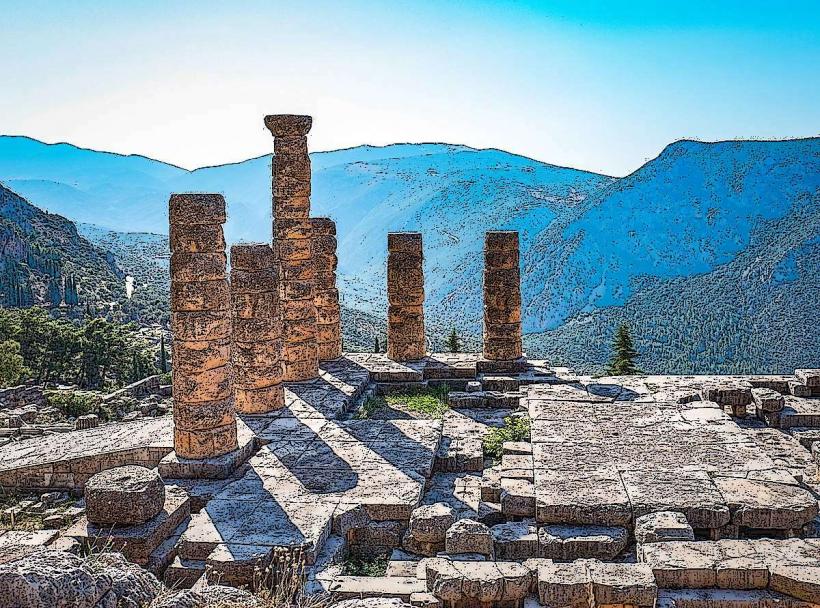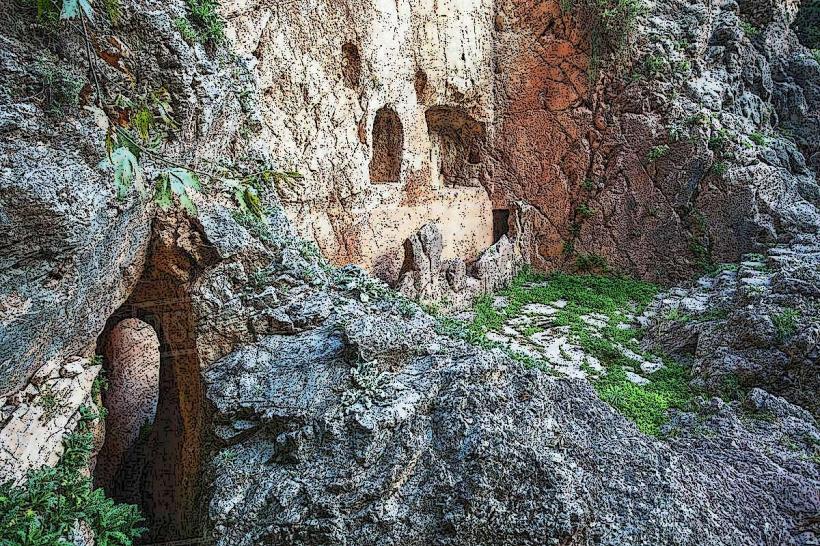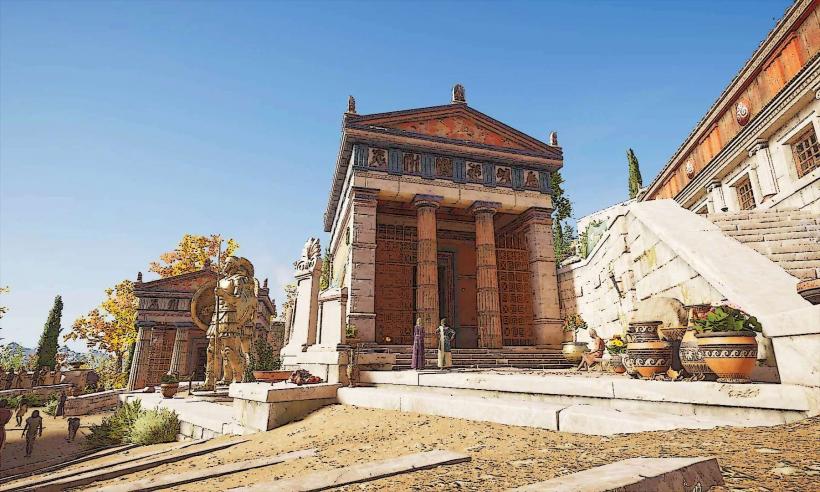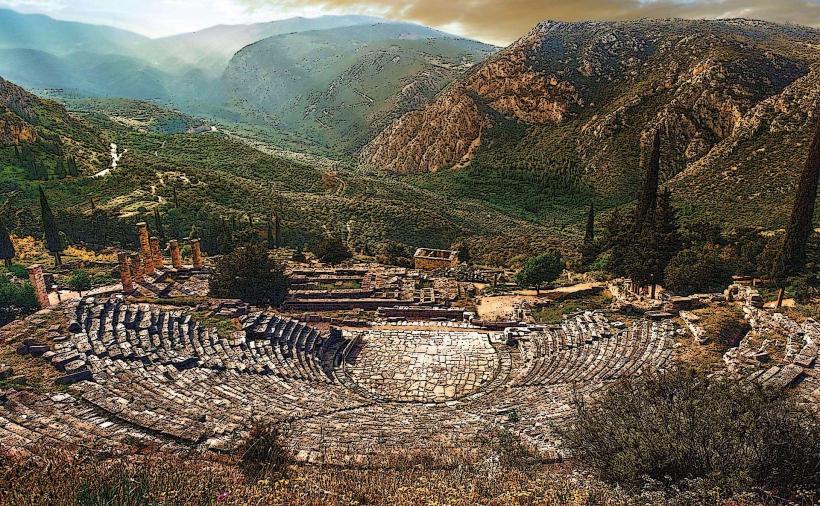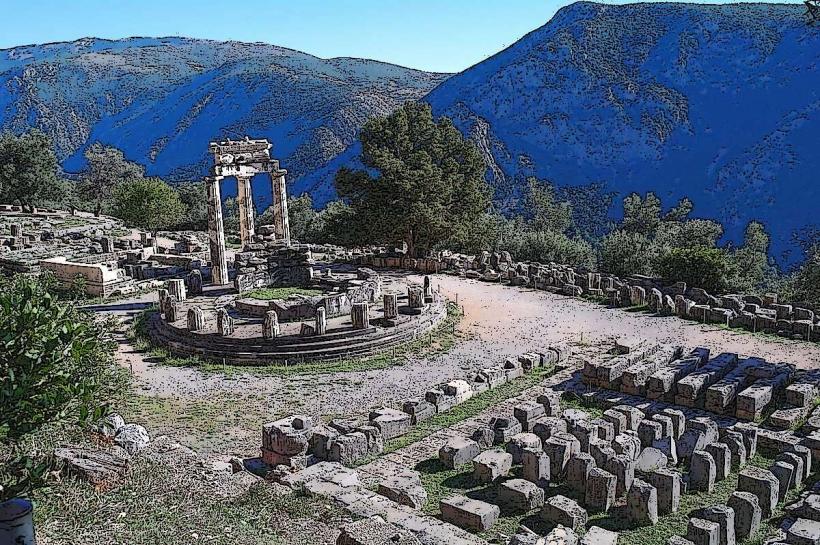Information
Landmark: Delphi Archaeological MuseumCity: Delphi
Country: Greece
Continent: Europe
The Delphi Archaeological Museum is an essential part of the historical and cultural experience of Delphi, offering visitors a comprehensive look at the ancient site and its significance in Greek religion, politics, and culture. The museum's collection is drawn primarily from excavations at the sanctuary of Apollo, where Delphi served as the most important oracle in the ancient Greek world. Here's a more detailed exploration of some of its most iconic exhibits and features:
1. The Charioteer of Delphi
- Date: 470 BCE
- Material: Bronze
- Significance: This is one of the most famous Greek sculptures and a key exhibit in the museum. The statue represents a charioteer who is part of a votive offering from a victory in the Pythian Games. The Pythian Games were held in honor of Apollo and were second only to the Olympic Games in prestige. The statue is exceptional because it is one of the few surviving examples of large-scale ancient Greek bronze statues. Its realistic style and detailed rendering of the charioteer’s attire, posture, and facial expression have made it a masterpiece of classical art.
- Context: The Charioteer was originally part of a larger group that included a chariot, horses, and possibly other figures. The inscription on the base of the statue indicates that the chariot and the statue were dedicated by a man named Polyzalus, a ruler of Gela, in gratitude for his victory in the games.
2. The Sphinx of Naxos
- Date: 560 BCE
- Material: Marble
- Significance: The Sphinx of Naxos is a large, intricately carved marble sculpture that once stood at the entrance of the Temple of Apollo. The sphinx, with the body of a lion and the head of a woman, was a popular motif in ancient art and symbolizes the mystical and divine connection between the gods and mortals. The statue was created by Naxian sculptors and is an example of the wealth and artistic achievement of the island of Naxos. The Naxians dedicated it to Apollo, likely to showcase their skill and to honor the god.
- Context: The Sphinx was part of a series of dedications by various Greek city-states at Delphi. It is significant because it highlights the competition between cities to show their devotion to Apollo through monumental works of art.
3. The Pediments of the Temple of Apollo
- Date: Early 5th century BCE
- Material: Marble
- Significance: The pediments of the Temple of Apollo depicted important scenes from Greek mythology. The central figures of the west pediment are Apollo and the serpent Python. According to legend, Apollo killed the Python to claim the sanctuary of Delphi as his own. The east pediment shows the battle between Apollo and the Titaness of Earth, Gaia. The reliefs on these pediments are notable for their narrative complexity and the skillful representation of the figures.
- Context: These pediments are among the finest examples of classical Greek art and architecture, showing the transition from the Archaic to the Classical style. The temple at Delphi was one of the most significant sanctuaries in ancient Greece, and the artworks served as both religious and civic symbols.
4. The Treasury of the Athenians
- Date: 490 BCE
- Significance: The Treasury of the Athenians was a small temple-like building erected by the Athenians to house their offerings to Apollo. The structure and its contents are important because they represent the relationship between the city of Athens and Delphi, highlighting Athens’ importance in Greek politics and its role in the wider Greek world. The Athenians made the treasury after their victory over the Persians at the Battle of Marathon, as a thank-you gift to Apollo.
- Artifacts: The museum displays sculptures and reliefs from the Treasury, including a famous marble frieze that shows scenes of battle and religious offerings. The reliefs illustrate the devotion of the Athenians and the connection between military victories and religious offerings.
5. Ancient Greek Inscriptions
- Significance: Delphi was a center of learning, where many important inscriptions were recorded. The museum has a large collection of ancient inscriptions, including decrees, laws, and religious texts. These inscriptions provide insight into the politics, religion, and daily life of the ancient Greeks.
- Notable Inscription: The most famous inscription from Delphi is the Delphic Maxims, a collection of short ethical sayings that were considered to be divine wisdom, attributed to Apollo. These maxims were inscribed on the Temple of Apollo and continue to influence Greek thought today.
6. The Votive Offerings
- Significance: Delphi was a major center for the worship of Apollo, and pilgrims from all over Greece and beyond visited to seek the Oracle’s advice. As part of their devotion, many offered votive gifts, which are displayed in the museum. These gifts include statues, bronzes, and pottery.
- Examples:
- Bronze Tripod: A tripod is a common votive offering, symbolizing a gift to Apollo, who was believed to sit on a tripod when delivering prophecies.
- Statues of Victorious Athletes: Various statues dedicated by victors of the Pythian Games are on display, showing the importance of athletic competition in ancient Greece.
- Funerary Monuments: Some votive offerings include small tombstones or grave markers, offering a glimpse into the social and religious practices of the time.
7. Artifacts from the Ancient Theater
- Significance: The ancient theater at Delphi is one of the most well-preserved in Greece. It was built in the 4th century BCE and could hold up to 5,000 spectators. The museum displays several objects from the theater, including sculptures, reliefs, and inscriptions related to theatrical performances and religious rites.
- Theater Reliefs: The reliefs depict mythological scenes, including representations of gods and heroes, showcasing the connection between drama and religious practices. Greek drama was often performed as part of religious festivals in honor of Apollo.
8. The Nymphaeum of the Delphic Sphinx
- Significance: This was an architectural feature built to honor the gods and to display the wealth of Delphi. It is a nymphaeum, or a monument associated with water, and was built to honor the nymphs and their connection to water, a vital resource in the ancient world.
Museum Architecture and Design:
The museum itself is designed to reflect the grandeur and importance of the site. It blends in with the surrounding landscape, perched on the slopes of Mount Parnassus, with expansive views over the Delphi valley. Its layout is carefully structured to guide visitors through different periods of ancient Greek history, providing a coherent narrative that connects the artifacts with the physical site.
- Outdoor Exhibits: The museum has several outdoor galleries where visitors can view larger monuments, such as the Altar of the Chians, a grand structure dedicated to Apollo, and other significant offerings to the gods.
Conclusion:
The Delphi Archaeological Museum is an essential visit for those interested in ancient Greek culture, religion, and art. Its extensive collection of sculptures, inscriptions, and everyday objects offers a rich tapestry of information about the spiritual, political, and social life of ancient Greece. Each artifact tells a story, whether it's a votive offering to the gods, a victory commemorated in bronze, or a piece of public art created by the most talented artists of the time.

